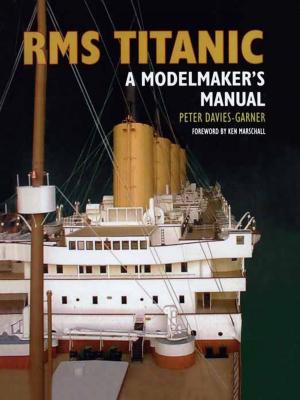Great Western, County Classes
The Churchward 4-4-0s, 4-4-2 Tanks and Hawksworth 4-6-0s
Nonfiction, Reference & Language, Transportation, Railroads, Business & Finance| Author: | David Maidment | ISBN: | 9781526706393 |
| Publisher: | Pen and Sword | Publication: | June 30, 2018 |
| Imprint: | Pen and Sword Transport | Language: | English |
| Author: | David Maidment |
| ISBN: | 9781526706393 |
| Publisher: | Pen and Sword |
| Publication: | June 30, 2018 |
| Imprint: | Pen and Sword Transport |
| Language: | English |
The Great Western Railway, had two classes of tender locomotives named after counties, the first class of two cylinder 4-4-0 tender locomotives, designed by George Jackson Churchward, were introduced in the 1900s to provide efficient motive power, including lines on the 'North & West' route between Hereford and Shrewsbury, owned jointly by the Great Western and L.N.W.R.
The 4-4-0 counties were in service until the early 1930s, when they were withdrawn and replaced by more modern motive power.
The 4-4-0 counties, were paralleled in design by the county 4-4-2 tanks, which operated suburban services in the London area and were also withdrawn in the early 1930s.
In 1945, the Great Western Introduced the County 4-6-0 tender locomotives, designed by F W Hawksworth, these two cylinder machines had a high pressure boiler, that was meant to give the same tractive effort as a Castle class, 4-6-0, four cylinder locomotive,
After modifications and boiler pressure reduction, the County class 4-6-0s, operated in express and semi fast train service, until the last members of the class were withdrawn in 1964.
The Great Western Railway, had two classes of tender locomotives named after counties, the first class of two cylinder 4-4-0 tender locomotives, designed by George Jackson Churchward, were introduced in the 1900s to provide efficient motive power, including lines on the 'North & West' route between Hereford and Shrewsbury, owned jointly by the Great Western and L.N.W.R.
The 4-4-0 counties were in service until the early 1930s, when they were withdrawn and replaced by more modern motive power.
The 4-4-0 counties, were paralleled in design by the county 4-4-2 tanks, which operated suburban services in the London area and were also withdrawn in the early 1930s.
In 1945, the Great Western Introduced the County 4-6-0 tender locomotives, designed by F W Hawksworth, these two cylinder machines had a high pressure boiler, that was meant to give the same tractive effort as a Castle class, 4-6-0, four cylinder locomotive,
After modifications and boiler pressure reduction, the County class 4-6-0s, operated in express and semi fast train service, until the last members of the class were withdrawn in 1964.















